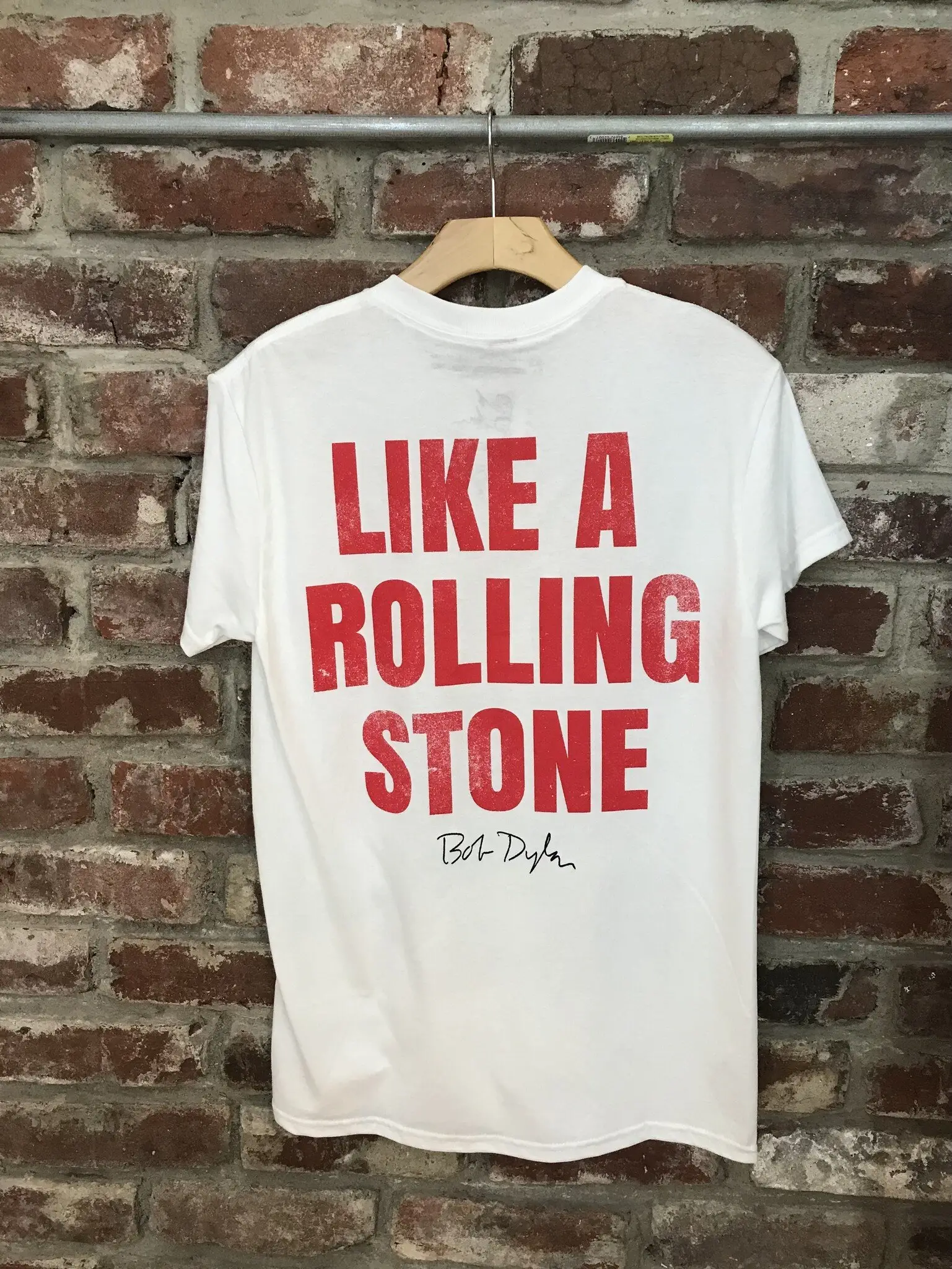Bob Dylan’s Rolling Stone Legacy: Top Rankings & Controversies

Bob Dylan rolling stone, an iconic figure in American music, has left an indelible mark on the pages of Rolling Stone magazine. From his early days as a folk singer to his evolution into a rock legend, Dylan’s journey has been intricately woven into the fabric of Rolling Stone’s narrative. This article explores the complex relationship between the enigmatic artist and the influential magazine, delving into Dylan’s top rankings, controversial moments, and enduring legacy as depicted in Rolling Stone’s coverage over the years.

Bob Dylan rolling stone Magazine
The Early Days: Dylan and Rolling Stone’s Inception
Rolling Stone magazine emerged in 1967, at a time when Bob Dylan was already a established figure in the music scene. The magazine’s founders recognized Dylan’s significance and featured him prominently in their inaugural issue. This early acknowledgment set the tone for a long-standing relationship between the artist and the publication.
Meet the Legendary Band Members of The Rolling Stones
Dylan’s influence on Rolling Stone was evident from the start. His intellectual approach to songwriting and his ability to blend poetry with popular music aligned perfectly with the magazine’s vision of merging rock journalism with more cerebral content. This synergy helped shape Rolling Stone’s identity as a publication that valued both artistic merit and cultural relevance.
Shaping the Magazine’s Editorial Direction
As Rolling Stone grew in prominence, Dylan’s impact on its editorial direction became increasingly apparent. The magazine’s coverage of Dylan’s work often went beyond simple music reviews, delving into analysis of his lyrics, exploration of his influences, and examination of his cultural impact. This approach set a precedent for how Rolling Stone would cover other artists, emphasizing depth and context in their reporting.
The Legendary Collaboration of Bob Dylan and Johnny Cash
Dylan’s constant evolution as an artist also influenced how Rolling Stone approached music journalism. The magazine learned to adapt its coverage to match Dylan’s changing styles, from folk to rock to country and beyond. This flexibility became a hallmark of Rolling Stone’s approach to music criticism, allowing them to stay relevant as musical trends shifted over the decades.

Influencing a Generation of Music Critics
Bob Dylan’s complex and poetic lyrics inspired a new generation of music critics who sought to analyze popular music with the same rigor applied to literature. Rolling Stone became a breeding ground for this new style of music criticism, with writers like Greil Marcus and Robert Christgau developing their voices through analysis of Dylan’s work.
These critics, in turn, influenced how Rolling Stone approached music journalism as a whole. They brought a level of intellectual discourse to popular music that had previously been reserved for classical and jazz. This elevated approach to music criticism became a defining characteristic of Rolling Stone, setting it apart from other music publications of the time.
Dylan as a Recurring Cover Star
Throughout Rolling Stone’s history, Bob Dylan has been a frequent cover star. His appearances on the magazine’s front page often coincided with major musical releases or significant moments in his career. These covers not only boosted sales for Rolling Stone but also cemented Dylan’s status as a cultural icon.
The imagery used for these covers often reflected Dylan’s current artistic phase, from the iconic photo of him with sunglasses and a cigarette in the 1960s to more introspective portraits in later years. These covers served as visual markers of Dylan’s evolution as an artist and Rolling Stone’s ongoing relationship with him.

Setting the Standard for Artist Profiles
Rolling Stone’s in-depth profiles of Bob Dylan set a new standard for music journalism. These articles often combined biographical information with critical analysis of Dylan’s work, providing readers with a comprehensive understanding of the artist and his music.
These profiles went beyond simple career overviews, often including insights from Dylan’s contemporaries, analysis from music critics, and, when possible, quotes from the notoriously private Dylan himself. This approach to artist profiles became a template for how Rolling Stone would cover other significant musical figures, influencing the landscape of music journalism as a whole.
The Evolution of Bob Dylan’s Music According to Rolling Stone
From Folk Prophet to Rock Revolutionary
Rolling Stone’s coverage of Bob Dylan’s musical evolution began with his early days as a folk singer in Greenwich Village. The magazine recognized Dylan’s talent for crafting poignant, socially conscious lyrics that resonated with the turbulent times of the 1960s. Songs like \win’ in the Wind\The Times They Are A-Changin’\ hailed as anthems of the civil rights movement and anti-war protests.
As Dylan transitioned from acoustic folk to electric rock in the mid-1960s, Rolling Stone was there to document and analyze this seismic shift. The magazine’s coverage of albums like \Bringing It All Back Home\Highway 61 Revisited\d readers understand the significance of Dylan’s musical transformation. Rolling Stone critics praised Dylan’s ability to infuse rock music with poetic lyrics and complex themes, elevating the genre to new artistic heights.

The Introspective Years: Blood on the Tracks and Beyond
Rolling Stone’s coverage of Dylan’s work in the 1970s focused on his increasingly personal and introspective songwriting. The magazine’s reviews of albums like \Blood on the Tracks\Desire\ skill in crafting emotionally resonant narratives and complex character studies.
Critics at Rolling Stone noted how Dylan’s music during this period reflected his personal struggles and evolving worldview. They praised his ability to transform personal experiences into universal themes, cementing his status as not just a songwriter, but a true poet of his generation.
Dylan’s Renaissance: Time Out of Mind and Modern Times
As Dylan entered the later stages of his career, Rolling Stone continued to chronicle his artistic evolution. The magazine’s coverage of albums like \Time Out of Mind\ Times\d Dylan’s ability to reinvent himself while staying true to his artistic vision.
Rolling Stone critics noted how these later works showcased a more mature Dylan, one who had embraced his role as an elder statesman of rock while continuing to push creative boundaries. The magazine’s reviews highlighted Dylan’s exploration of American musical traditions, from blues and country to jazz and rockabilly, and how he incorporated these influences into his unique sound.
Unpacking Dylan’s Lyrics: Rolling Stone’s Critical Analysis
Throughout Dylan’s career, Rolling Stone has dedicated significant space to analyzing his lyrics. The magazine’s critics have delved deep into Dylan’s words, unpacking his use of imagery, metaphor, and literary references. This approach has helped readers appreciate the depth and complexity of Dylan’s songwriting.
Rolling Stone’s analysis of Dylan’s lyrics often placed them in a broader cultural and historical context. Critics examined how Dylan’s words reflected and commented on the social and political issues of their time, from the civil rights movement to the Vietnam War to more recent global events.

Tracking Dylan’s Musical Influences
Rolling Stone has consistently explored the various musical influences that have shaped Dylan’s sound over the years. From his early folk heroes like Woody Guthrie and Pete Seeger to his later interest in traditional American music, the magazine has helped readers understand the rich tapestry of influences that inform Dylan’s work.
This exploration of Dylan’s musical roots has often included interviews with his contemporaries and collaborators, providing insight into how Dylan absorbed and transformed various musical traditions. Rolling Stone’s coverage has painted a picture of Dylan as a musical sponge, constantly absorbing new influences and incorporating them into his ever-evolving sound.
Bob Dylan’s Top Rankings in Rolling Stone’s Greatest Artists List
The Pinnacle of Musical Greatness: Dylan’s Consistent Top Rankings
Since Rolling Stone began compiling its \Greatest Artists of All Time\, Bob Dylan has consistently ranked near the top. In the inaugural list published in 2004, Dylan secured the third position, trailing only The Beatles and Elvis Presley. This high ranking reflected the magazine’s recognition of Dylan’s profound impact on popular music and culture.

Dylan’s consistently high rankings in subsequent lists have cemented his status as one of the most influential musicians of the 20th and 21st centuries. Rolling Stone’s critics have repeatedly cited his poetic lyrics, innovative songwriting, and ability to reinvent himself as key factors in his enduring relevance and influence.
Breaking Down Dylan’s Impact: Why He Ranks So High
Rolling Stone’s justification for Dylan’s high rankings often focuses on several key aspects of his career. First and foremost is his songwriting prowess. The magazine has frequently praised Dylan’s ability to craft lyrics that are both deeply personal and universally resonant, tackling complex themes with poetic finesse.
Another factor in Dylan’s high rankings is his influence on other artists. Rolling Stone has documented how Dylan’s work has inspired countless musicians across various genres, from folk and rock to country and hip-hop. This wide-ranging influence has been a significant factor in Dylan’s consistently high placement on these lists.
Dylan vs. The Beatles: A Friendly Rivalry in the Rankings
One of the most interesting aspects of Rolling Stone’s rankings has been the ongoing \competition\ Dylan and The Beatles for the top spots. While The Beatles have often edged out Dylan for the number one position, the magazine has frequently noted the close relationship and mutual influence between Dylan and the Fab Four.
Rolling Stone’s coverage has explored how Dylan’s lyrical depth inspired The Beatles to push beyond simple love songs, while The Beatles’ musical innovations in turn influenced Dylan’s exploration of rock and psychedelic sounds. This interplay between two of music’s greatest forces has been a recurring theme in Rolling Stone’s analysis of 20th-century popular music.
Dylan’s Impact Beyond Music: Cultural and Literary Influence
In justifying Dylan’s high rankings, Rolling Stone has often looked beyond his musical output to consider his broader cultural impact. The magazine has explored how Dylan’s work has influenced literature, film, and visual art, cementing his status as a cultural icon beyond the realm of music.
Rolling Stone’s coverage has also highlighted Dylan’s literary achievements, including his Nobel Prize in Literature. This recognition of Dylan’s impact on the written word has further solidified his position as one of the greatest artists of all time in the magazine’s rankings.
The Legacy Factor: Dylan’s Enduring Relevance
A key factor in Dylan’s consistent high rankings has been his ability to remain relevant across decades. Rolling Stone has noted how each new generation seems to discover and connect with Dylan’s music, ensuring his legacy continues to grow.
The magazine has also praised Dylan’s continued artistic output, noting how albums released in his later career have maintained a high level of quality and creativity. This ongoing productivity and artistic growth have played a significant role in Dylan’s enduring high rankings in Rolling Stone’s lists.

Bob Dylan’s Impact on Rolling Stone’s Critics and Readers
Shaping Critical Discourse: Dylan’s Influence on Music Journalism
Bob Dylan’s complex, poetic lyrics and ever-evolving musical style have had a profound impact on how Rolling Stone’s critics approach music journalism. His work challenged critics to dig deeper, to analyze lyrics with the same rigor applied to literature, and to consider the broader cultural context of musical output.
This influence led to a more intellectual approach to music criticism in Rolling Stone. Critics began to explore the thematic depth of songs, the cultural relevance of albums, and the artistic growth of musicians over time. Dylan’s work became a benchmark against which other lyricists were measured, elevating the standards of songwriting critique in the magazine.
Engaging Readers: Dylan as a Catalyst for Discussion
Dylan’s music and persona have consistently sparked debate and discussion among Rolling Stone’s readership. His cryptic lyrics, political statements, and artistic choices have provided ample material for readers to interpret, argue over, and connect with personally.
Rolling Stone has often used Dylan’s work as a jumping-off point for broader discussions about music, culture, and society. Reader letters and online comments about Dylan-related articles have been a consistent feature of the magazine, demonstrating his enduring ability to engage and provoke thought among music fans.
The Dylan Effect: Influencing Reader Tastes and Expectations
Rolling Stone’s extensive coverage of Dylan has played a significant role in shaping reader tastes and expectations. By consistently praising Dylan’s lyrical depth and musical innovation, the magazine has encouraged its readership to value these qualities in other artists as well.
This has led to a more discerning readership, one that expects depth and substance in the music they consume. Dylan’s influence, as portrayed through Rolling Stone, has helped create a audience that appreciates musical complexity and lyrical sophistication.
Dylan as a Generational Bridge
Rolling Stone’s coverage of Dylan has often highlighted his ability to connect with multiple generations of listeners. The magazine has explored how Dylan’s music resonates with baby boomers who grew up with his early work, as well as younger generations discovering his catalog for the first time.
This multi-generational appeal has allowed Rolling Stone to use Dylan as a unifying figure, bridging gaps between different age groups within its readership. Articles comparing Dylan’s impact across generations have become a staple of the magazine’s coverage, fostering a sense of shared cultural experience among readers.
The Critical Lens: How Dylan Changed Music Review Standards
Dylan’s complex body of work has pushed Rolling Stone’s critics to develop more nuanced and comprehensive review standards. His albums often required multiple listens and deep analysis to fully appreciate, leading to more in-depth and thoughtful reviews.
This approach to reviewing Dylan’s work has influenced how the magazine critiques other artists. Rolling Stone’s reviews began to consider not just the immediate impact of an album, but its potential long-term significance and its place within an artist’s broader catalog. This more holistic approach to music criticism has become a hallmark of Rolling Stone’s reviewing style.

The Relationship Between Bob Dylan and Rolling Stone Throughout the Years
The Early Years: Mutual Growth and Influence
In the late 1960s and early 1970s, as Rolling Stone was establishing itself as a leading voice in music journalism, Bob Dylan was already a major figure in the music world. The magazine’s coverage of Dylan during this period helped establish its credibility, while also providing a platform for in-depth exploration of Dylan’s evolving artistry.
Rolling Stone’s early interviews with Dylan, rare as they were, became highly anticipated events. The magazine’s willingness to delve into Dylan’s creative process and philosophical musings set it apart from other publications of the time. This symbiotic relationship helped both Dylan and Rolling Stone cement in the cultural landscape.
Navigating Dylan’s Reclusive Periods
Throughout his career, Dylan has been known for his periods of reclusiveness and his reluctance to engage with the media. Rolling Stone has had to navigate these challenges, often relying on insights from Dylan’s collaborators, music historians, and cultural critics to provide coverage during times when the artist himself was unavailable.
Despite these challenges, Rolling Stone has maintained its commitment to covering Dylan’s work and impact. The magazine’s ability to provide thoughtful analysis and context, even in the absence of direct access to Dylan, has been a testament journalistic prowess and deep understanding of the artist’s significance.

The Evolution of Critical Perspective
As Dylan’s career has spanned decades, Rolling Stone’s critical perspective on his work has naturally evolved. Early coverage tended to focus on Dylan’s role as a voice of his generation and a harbinger of social change. As his career progressed, the magazine’s analysis became more nuanced, exploring Dylan’s artistic growth, his exploration of different musical styles, and his place in the broader context of American cultural history.
This evolution in critical perspective has allowed Rolling Stone to maintain relevant and insightful coverage of Dylan throughout his long career. The magazine has been able to appreciate both the historical significance of Dylan’s early work and the continued artistic merit of his later output.
Landmark Moments in the Dylan-Rolling Stone Relationship
Certain moments stand out in the long relationship between Bob Dylan and Rolling Stone. These include the magazine’s coverage of Dylan’s conversion to Christianity in the late 1970s, its in-depth analysis of his return to form with \ Out of Mind\ in 1997, and its celebration of his Nobel Prize win in 2016.
These landmark moments have often resulted in special issues or extended features, allowing Rolling Stone to provide comprehensive coverage of major events in Dylan’s career. Such coverage has not only documented Dylan’s journey but has also reflected the changing landscape of popular music and culture.

The Legacy of a Lifelong Dialogue
The ongoing relationship between Bob Dylan and Rolling Stone can be seen as a lifelong dialogue between an artist and a chronicler of popular culture. Through its coverage, Rolling Stone has helped shape the public’s understanding of Dylan’s work, while Dylan’s artistry has influenced the magazine’s approach to music journalism.
This enduring relationship has resulted in a rich archive of articles, interviews, and critical analyses that provide invaluable insight into one of the most significant musical careers of the past century. It stands as a testament to the power of thoughtful music journalism and the enduring impact of a truly revolutionary artist.
Bob Dylan’s Most Memorable Interviews with Rolling Stone
The 1969 Interview: Dylan at the Crossroads
One of the most significant early interviews with Bob Dylan in Rolling Stone took place in 1969. This conversation captured Dylan at a crucial moment in his career, following his motorcycle accident and subsequent retreat from the public eye. The interview provided rare insights into Dylan’s state of mind during this period of transition.
In this interview, Dylan discussed his changing approach to songwriting, his thoughts on fame, and his evolving musical interests. The conversation helped set the tone for how Rolling Stone would approach future interviews with Dylan, emphasizing depth and allowing the artist space to express his complex thoughts and ideas.

The 1978 Street-Legal Interview: Dylan’s Artistic Reinvention
In 1978, Rolling Stone published a notable interview coinciding with the release of Dylan’s album \Legal.\ captured Dylan in the midst of another artistic reinvention, as he moved away from his folk-rock roots towards a more polished, full-band sound.
The interview delved into Dylan’s creative process, his thoughts on his changing musical style, and his reflections on his career up to that point. It provided readers with valuable context for understanding this new phase in Dylan’s artistic journey and demonstrated Rolling Stone’s commitment to documenting the ongoing evolution of major artists.
The 1992 Good As I Been To You Interview: Dylan’s Return to Roots
Rolling Stone’s 1992 interview with Dylan coincided with the release of his album \Good As I Been To You,\ which saw him returning to traditional folk songs. This conversation explored Dylan’s relationship with folk music, his views on the state of contemporary music, and his reflections on his own legacy.
The interview was notable for its focus on Dylan’s musical influences and his place in the broader tradition of American folk music. It showcased Rolling Stone’s ability to place Dylan’s work in a larger cultural and historical context, enhancing readers’ understanding of the artist’s creative choices and motivations.

The 2001 Love and Theft Interview: Dylan’s Continued Relevance
In 2001, Rolling Stone featured an interview with Bob Dylan coinciding with the release of his album \Love and Theft.\ This conversation highlighted Dylan’s enduring relevance as a songwriter and performer, showcasing his ability to adapt his sound while staying true to his artistic vision.
The interview touched on Dylan’s songwriting process, his thoughts on aging in the music industry, and his reflections on the changing landscape of popular music. It underscored Rolling Stone’s ongoing commitment to covering Dylan’s work in a way that captures both the artist’s legacy and his continued impact on contemporary music.
The 2012 Tempest Interview: Dylan’s Enduring Artistry
In 2012, Rolling Stone published an interview with Bob Dylan to coincide with the release of his album \Tempest.\ This conversation delved into Dylan’s songwriting inspirations, his views on mortality, and his reflections on his place in music history.
The interview provided valuable insights into Dylan’s creative process at a later stage in his career, showcasing his continued ability to craft compelling songs that resonate with audiences. Rolling Stone’s coverage of this interview demonstrated the magazine’s ongoing dedication to documenting Dylan’s evolving artistry and ensuring that readers have access to in-depth analysis of his work.
Bob Dylan’s Controversial Moments Covered by Rolling Stone
The Electric Controversy: Newport Folk Festival 1965
One of the most iconic moments in Bob Dylan’s career was his performance at the Newport Folk Festival in 1965, where he famously went electric. Rolling Stone covered this controversial event, which marked a significant departure from Dylan’s acoustic folk roots and sparked debate among fans and critics.
The magazine’s coverage of the Newport Folk Festival incident provided readers with a front-row seat to a pivotal moment in music history, capturing the intense reactions to Dylan’s new sound and the implications for the folk music movement. Rolling Stone’s analysis of this controversy helped contextualize Dylan’s artistic evolution and its impact on the broader music scene.
The Christian Conversion: Slow Train Coming
Bob Dylan’s conversion to Christianity in the late 1970s was a deeply personal and controversial moment in his career. Rolling Stone covered this period of Dylan’s life extensively, exploring the religious themes in his music, the reactions of fans and critics, and the implications for his artistic identity.
The magazine’s coverage of Dylan’s Christian phase reflected the complexity of his spiritual journey and the ways in which his faith influenced his songwriting. By providing in-depth analysis and interviews with Dylan and those close to him, Rolling Stone helped shed light on this controversial chapter in the artist’s life and career.
The Nobel Prize Win: A Literary Honor for a Musical Icon
In 2016, Bob Dylan made headlines when he was awarded the Nobel Prize in Literature, becoming the first musician to receive the prestigious honor. Rolling Stone’s coverage of this unexpected win highlighted the significance of Dylan’s lyrical contributions to the literary world and sparked discussions about the boundaries between music and literature.
The magazine’s analysis of Dylan’s Nobel Prize win showcased its ability to explore the intersections of music, culture, and academia, providing readers with a deeper understanding of the artist’s far-reaching influence. Rolling Stone’s coverage of this controversial moment underscored Dylan’s status as a boundary-breaking artist whose impact transcends traditional categorizations.

Bob Dylan’s Album Reviews by Rolling Stone Critics
Bringing It All Back Home (1965): A Bold Departure
Bob Dylan’s album \Bringing It All Back Home\ marked a pivotal moment in his career, as he transitioned from acoustic folk to electric rock. Rolling Stone’s review of this groundbreaking album praised Dylan’s bold experimentation with sound and lyrics, recognizing the record as a watershed moment in music history.
The magazine’s analysis of \Bringing It All Back Home\ captured the excitement and controversy surrounding Dylan’s new musical direction, offering readers a glimpse into the artist’s evolving creative vision. Rolling Stone’s review helped solidify the album’s reputation as a classic and highlighted its enduring influence on subsequent generations of musicians.
Blood on the Tracks (1975): A Masterpiece of Emotional Depth
Bob Dylan’s album \Blood on the Tracks\ is often regarded as one of his greatest works, showcasing his unparalleled songwriting skills and emotional depth. Rolling Stone’s review of this seminal album lauded Dylan’s introspective lyrics, haunting melodies, and raw storytelling, recognizing it as a masterpiece of confessional songwriting.
The magazine’s analysis of \Blood on the Tracks\ delved into the personal turmoil that inspired the album’s songs, providing readers with valuable context for understanding Dylan’s artistic process. Rolling Stone’s review highlighted the album’s enduring impact on the singer-songwriter genre and cemented its status as a classic in the annals of popular music.

Time Out of Mind (1997): A Triumph of Resilience
Bob Dylan’s album \Time Out of Mind\ marked a significant comeback for the artist, earning critical acclaim and commercial success after a period of relative obscurity. Rolling Stone’s review of this Grammy-winning album praised Dylan’s gritty vocals, evocative lyrics, and atmospheric production, hailing it as a triumph of resilience and artistic renewal.
The magazine’s analysis of \Time Out of Mind\ celebrated Dylan’s ability to reinvent himself once again, demonstrating his enduring relevance and creative vitality. Rolling Stone’s review underscored the album’s importance in the context of Dylan’s storied career, showcasing the artist’s unwavering commitment to pushing artistic boundaries and captivating audiences.
Modern Times (2006): A Testament to Timeless Talent
Bob Dylan’s album \Modern Times\ continued his late-career resurgence, earning widespread acclaim for its blend of blues, folk, and rock influences. Rolling Stone’s review of this Grammy-winning album praised Dylan’s wry observations, soulful vocals, and masterful musicianship, highlighting it as a testament to his timeless talent and enduring appeal.
The magazine’s analysis of \Modern Times\ emphasized Dylan’s ability to draw on diverse musical traditions while maintaining his distinctive voice and perspective. Rolling Stone’s review positioned the album as a reflection of Dylan’s continued relevance in the ever-changing landscape of popular music, showcasing his ability to connect with listeners across generations.

Bob Dylan’s Collaborations with Rolling Stone for Special Editions
The 50th Anniversary Tribute Issue: Celebrating Dylan’s Legacy
In 2012, Rolling Stone collaborated with Bob Dylan to produce a special edition tribute issue commemorating the 50th anniversary of his eponymous debut album. This landmark publication featured exclusive interviews, rare photos, and in-depth analyses of Dylan’s impact on music and culture, showcasing the artist’s enduring legacy.
The special edition tribute issue served as a comprehensive retrospective of Dylan’s career, highlighting key moments, albums, and collaborations that shaped his artistic journey. Rolling Stone’s collaboration with Dylan for this milestone publication underscored the magazine’s deep appreciation for the artist’s contributions to popular music and its commitment to honoring his lasting influence.
The Bootleg Series Features: Uncovering Dylan’s Archives
Rolling Stone has frequently partnered with Bob Dylan to cover the release of his acclaimed Bootleg Series, which features rare and unreleased recordings from throughout his career. These special features have provided readers with unique insights into Dylan’s creative process, showcasing previously unheard songs, alternate takes, and live performances.
The magazine’s collaboration with Dylan on the Bootleg Series features has allowed fans to delve deeper into the artist’s musical evolution and explore hidden gems from his extensive catalog. Rolling Stone’s in-depth coverage of these archival releases has enhanced readers’ understanding of Dylan’s artistic development and reinforced his reputation as a prolific and innovative musician.
The Rolling Stone Interviews: Capturing Dylan’s Voice
Over the years, Rolling Stone has compiled a collection of interviews with Bob Dylan spanning his entire career, offering readers a comprehensive look at the artist’s thoughts, experiences, and creative inspirations. These curated interviews have provided valuable insights into Dylan’s evolution as a songwriter and performer, showcasing his wit, wisdom, and enigmatic charm.
The magazine’s compilation of Rolling Stone interviews with Dylan has become a treasured resource for fans and scholars alike, offering a firsthand glimpse into the mind of a musical legend. Rolling Stone’s collaboration with Dylan on these retrospective features has deepened readers’ appreciation for the artist’s multifaceted genius and his enduring impact on popular culture.

Bob Dylan’s Legacy in the Pages of Rolling Stone Magazine
A Cultural Icon Transcending Generations
Bob Dylan’s influence on Rolling Stone magazine extends far beyond his music, encompassing his status as a cultural icon whose impact resonates across generations. From his early folk protest songs to his later explorations of rock, country, and blues, Dylan’s eclectic body of work has left an indelible mark on the pages of Rolling Stone and the broader landscape of popular music.
Rolling Stone’s coverage of Dylan’s legacy has celebrated his artistic achievements, examined his social and political impact, and explored the enduring relevance of his music in an ever-changing world. The magazine’s ongoing dialogue with Dylan reflects a mutual respect and admiration for each other’s contributions to the cultural zeitgeist, creating a symbiotic relationship that has enriched both the artist and the publication.
An Enduring Partnership Built on Mutual Respect
The relationship between Bob Dylan and Rolling Stone magazine stands as a testament to the power of artistic collaboration and journalistic integrity. Over the decades, Dylan’s music has inspired some of the magazine’s most insightful writing, while Rolling Stone’s coverage has helped shape the public’s understanding of Dylan’s multifaceted career and complex persona.
Through interviews, reviews, special editions, and retrospective features, Rolling Stone has chronicled Dylan’s evolution as an artist, a thinker, and a cultural force. The magazine’s commitment to providing thoughtful analysis and in-depth coverage of Dylan’s work has elevated the conversation around popular music and solidified its reputation as a premier source for music journalism.

A Lasting Impact on Music Journalism and Popular Culture
Bob Dylan’s legacy in the pages of Rolling Stone magazine serves as a touchstone for the enduring power of music to inspire, provoke, and illuminate. His songs have provided a soundtrack for social change, personal introspection, and artistic innovation, while Rolling Stone’s coverage has offered a platform for critical engagement, historical reflection, and creative exploration.
As Dylan’s influence continues to reverberate through the halls of popular culture, his partnership with Rolling Stone remains a beacon of excellence in music journalism. The magazine’s dedication to honoring Dylan’s legacy, amplifying his voice, and preserving his artistic vision ensures that future generations will have access to the rich tapestry of sounds, stories, and ideas that define the work of a true musical legend.
The Influence of Bob Dylan and Little Richard on Music History
Conclusion
In conclusion, Bob Dylan’s influence on Rolling Stone magazine has been profound, shaping the publication’s coverage of music, culture, and society for over five decades. From his early days as a folk troubadour to his later incarnations as a rock innovator and poetic sage, Dylan’s music has provided a constant source of inspiration and introspection for Rolling Stone’s writers, critics, and readers.
Through interviews, album reviews, special editions, and collaborative projects, Rolling Stone has documented Dylan’s evolution as an artist and a cultural icon, offering valuable insights into his creative process, his personal struggles, and his enduring impact on popular music. The magazine’s ongoing dialogue with Dylan reflects a deep mutual respect and admiration, resulting in a rich archive of articles, interviews, and analyses that illuminate the many facets of Dylan’s artistry.

As Bob Dylan’s legacy continues to unfold in the pages of Rolling Stone, his partnership with the magazine stands as a testament to the enduring power of music to transcend boundaries, challenge conventions, and unite generations. Through their shared commitment to artistic excellence, intellectual curiosity, and social relevance, Dylan and Rolling Stone have forged a lasting bond that will continue to inspire, inform, and enlighten audiences for years to come.



